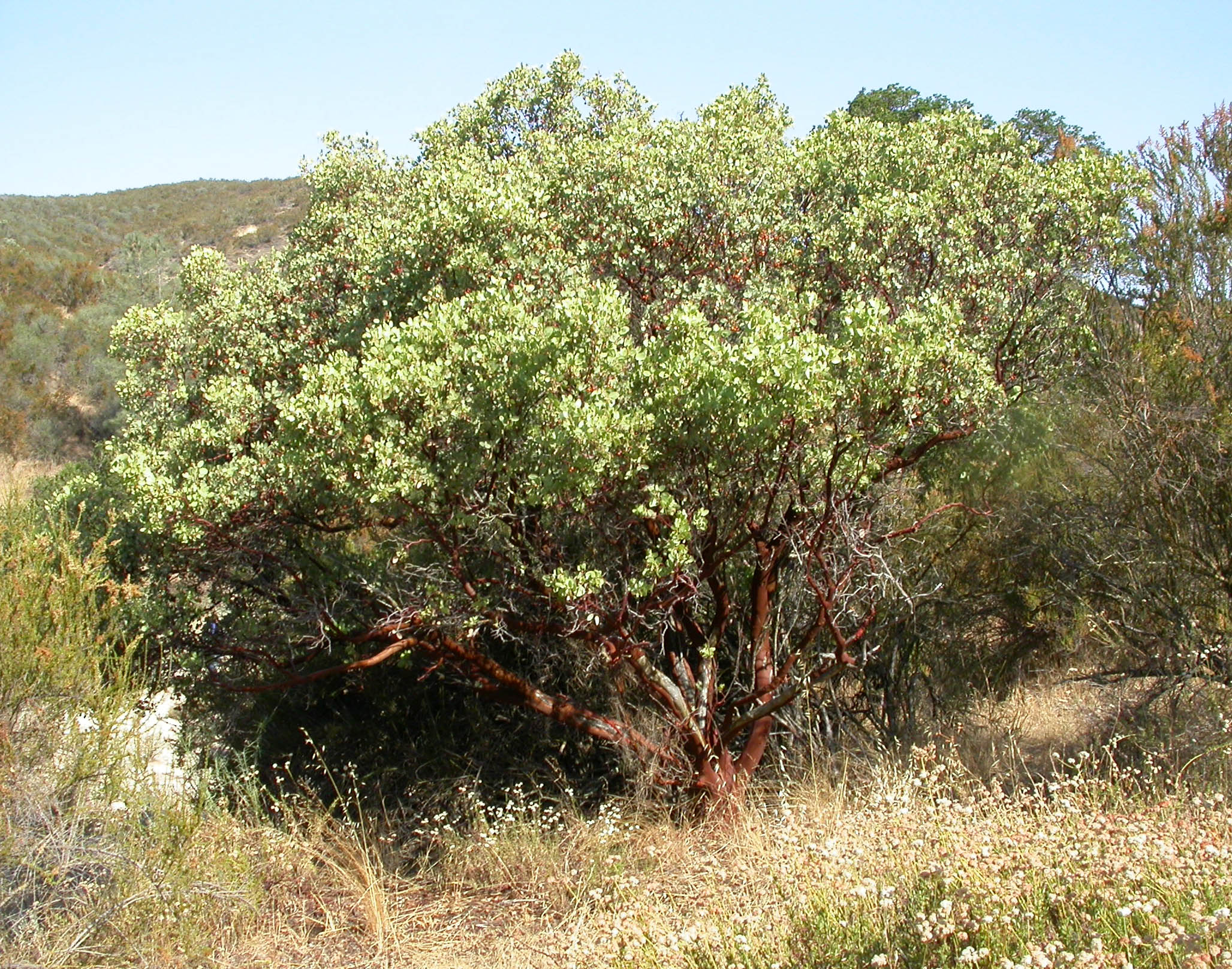
Big Berried Manzanita (NPS)
On the morning of Thanksgiving 2020, my roommate and I eagerly made our way up Condor Gulch trail to marvel at the rock formations this under-appreciated park was known for. And as the sun rose and the morning chill subsided, we took a break to remove some layers, when we realized we were in the presence of a tree neither of us had ever seen before.
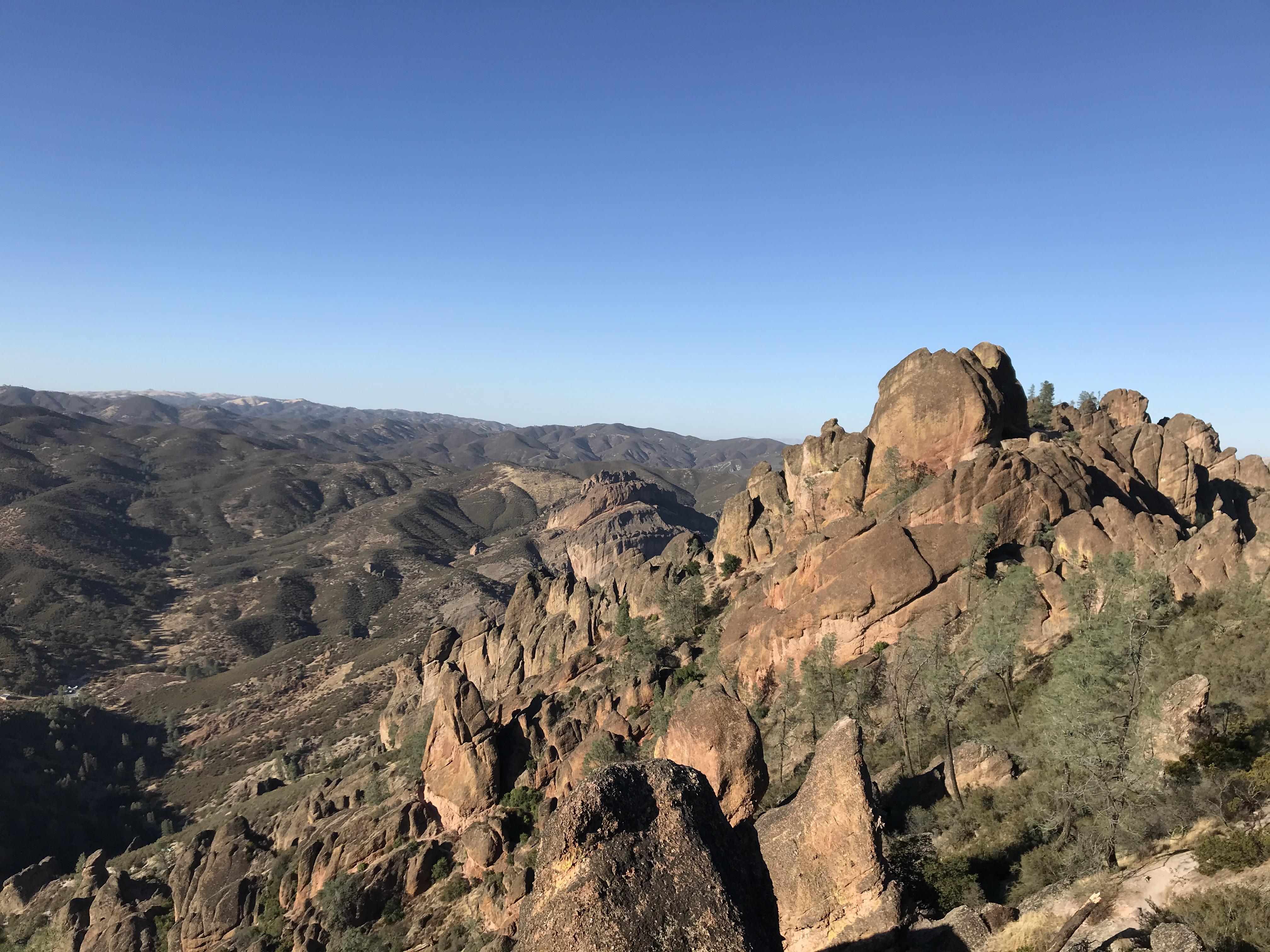
It was the distinct, metallic-like, red bark that first drew our attention and our instant admiration.
I felt compelled to research this tree – what I would come to know as the Big Berried Manzanita (Arctostaphylos glauca) – and this is exactly what I did when I got home.
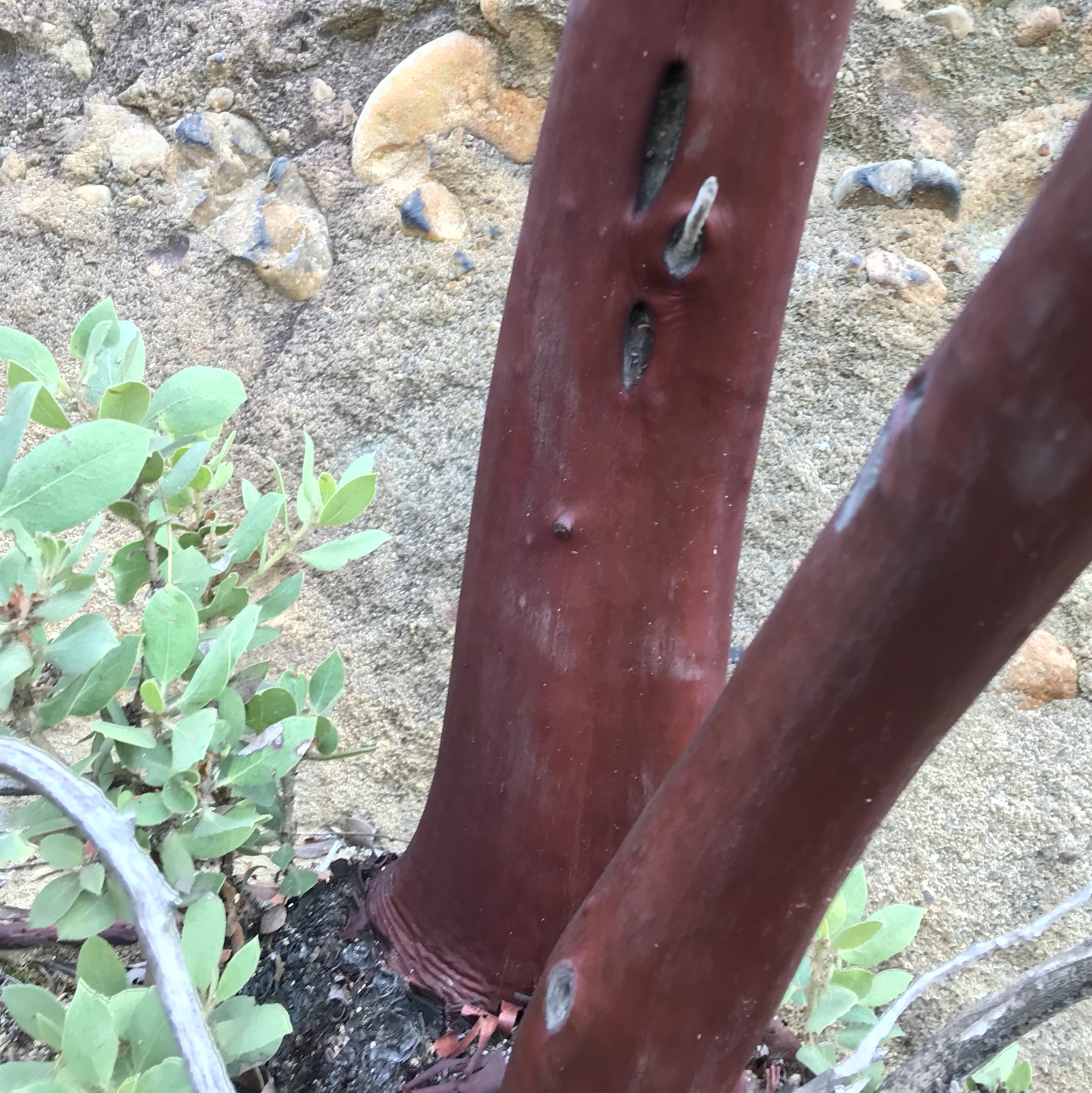
Technically more of a large shrub than a tree, these striking evergreen plants are native to the chaparral regions of California and Baja California and have evolved an extraordinary robustness. They grow well in acidic soils, are resistant to heat, drought and cold, and can live up to 100 years 1.
As their name suggests, the Big Berried Manzanitas are known for their relatively large, red berries and this is what distinguishes them from other manzanita species.
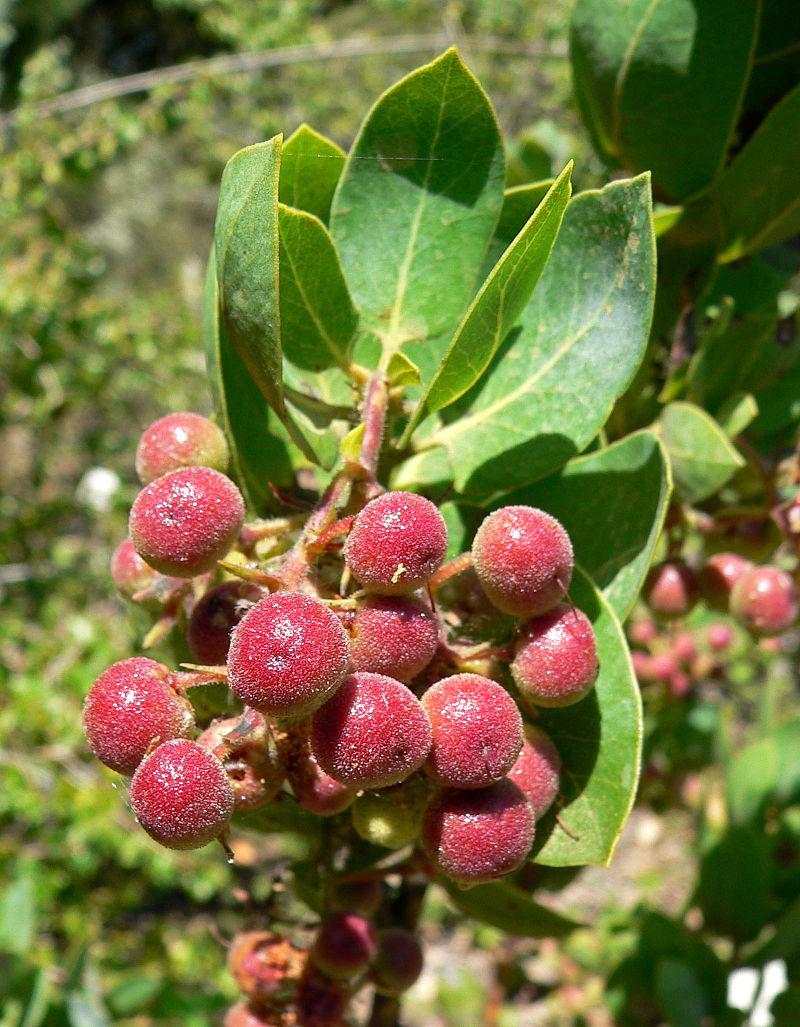
“Arctostaphylos glauca“ by Stan Shebs is licensed under CC BY 3.0
The general term, manzanita, comes to us from the Spanish who thought the red berries resembled little red apples; the Spanish diminutive of “manzana” or apple.
These Big Berried Manzanita can reach heights of up to 6 meters or 20 feet tall, decorated with beautiful blue-green, oval leaves. Although I didn’t bring my handy measuring tape with me, I was able to stand comfortably beneath the twisting branches to admire their bark.
A simply wonderful tree.
This trip reminded me of the importance of slowing down. And that the simple pleasures in life – the warmth of a campfire, the exhilaration of moving my body and the enjoyment of an honest conversation with a friend – are some of the best pleasures in life.
My roommate and I remain extremely grateful for the whole experience. We not only discovered the gorgeous manzanita tree, but as we sat to admire the beautiful pastel-colored rocks, we were fortunate enough to witness the majestic condor soar effortlessly overhead.
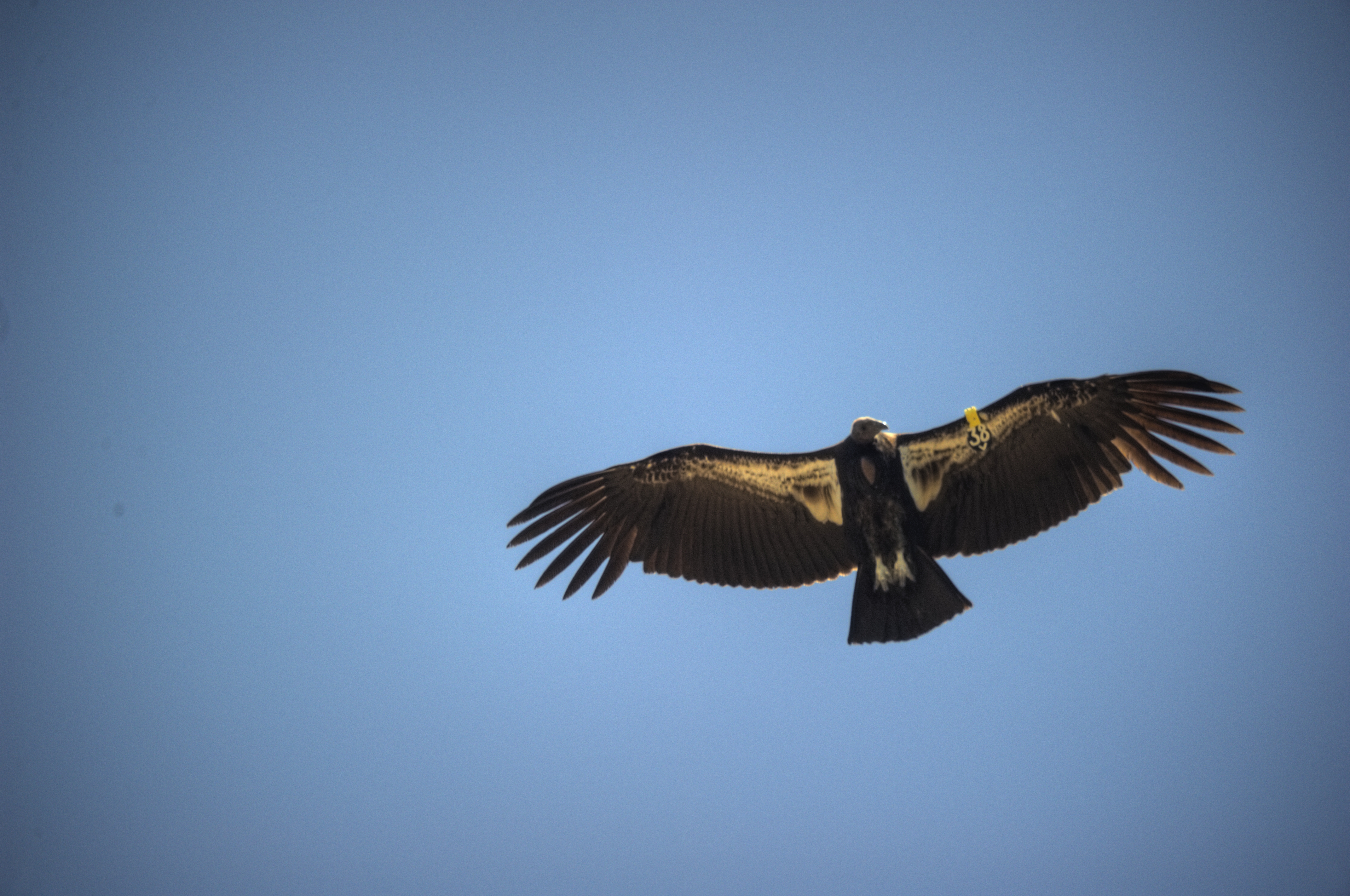
Soaring Condor (NPS/Mason Cummings)
I hope this series inspires you, dear reader, to get out and discover for yourself the wonders of our natural world. I will conclude with a quote from legendary naturalist John Muir 2:
“The clearest way into the Universe is through a forest wilderness.”
References
1 Howard, Janet L. “Arctostaphylos Glauca.” Fire Effects Information System, U.S. Department of Agriculture, Forest Service, Rocky Mountain Research Station, Fire Sciences Laboratory, 1993, www.fs.fed.us/database/feis/plants/shrub/arcglu/all.html [broken link].
2 Muir, John, and Linnie Marsh Wolfe. John of the Mountains: The Unpublished Journals of John Muir. University of Wisconsin Press, Madison, 1979.